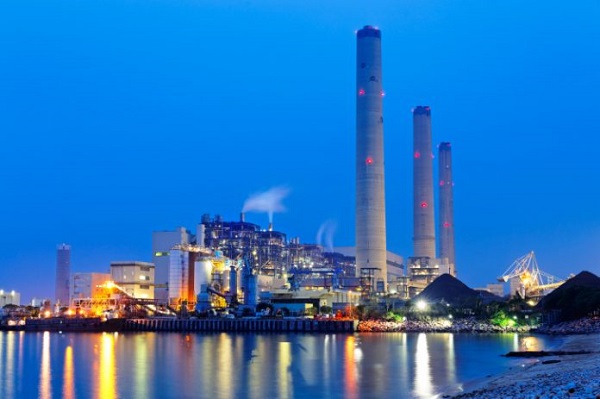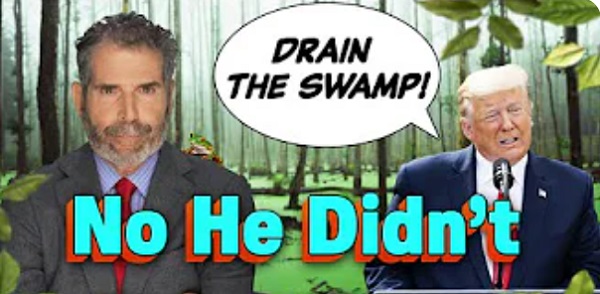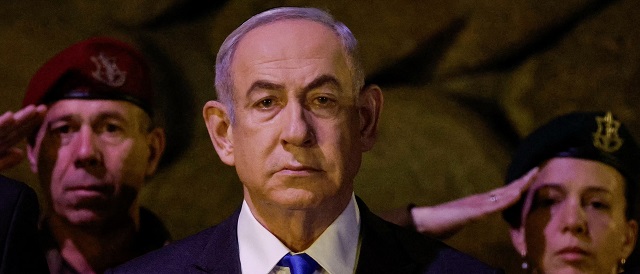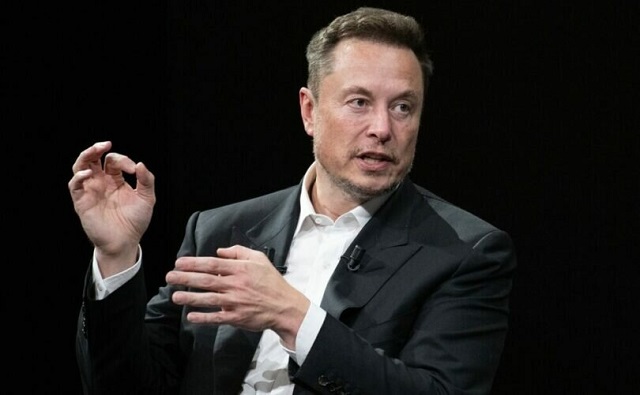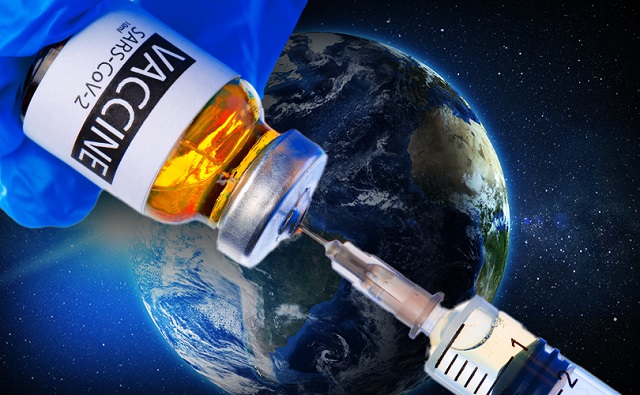Brownstone Institute
The Many Layers of the Canada-India Diplomatic Dispute
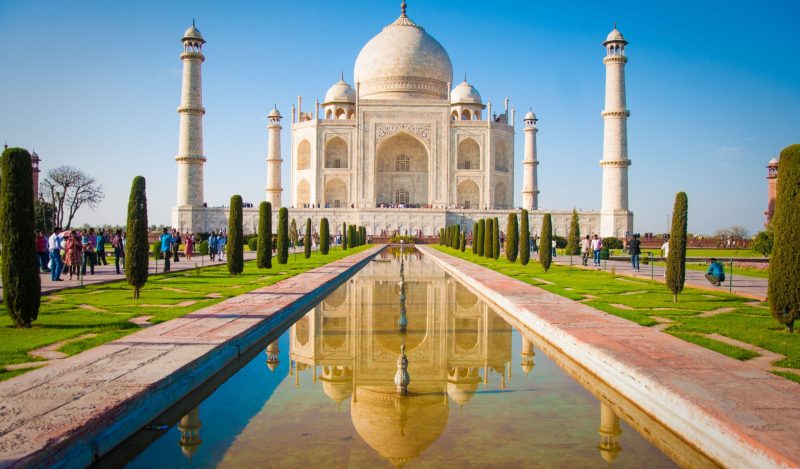
From the Brownstone Institute
BY
Canada–India relations have been trapped in a downward spiral following an explosive statement in Parliament by Prime Minister (PM) Justin Trudeau on September 18. He alleged involvement of Indian agents in the June 18 killing of Hardeep Singh Nijjar, a prominent British Columbian (BC) Sikh leader who was on India’s most wanted watchlist.
India has rejected the charge as “absurd” and denounced Canada as a “safe haven” for “terrorists, extremists and organized crime”—language normally reserved for Pakistan.
To understand the unexpected diplomatic tensions between the two Commonwealth parliamentary democracies, we need to recall the historical context, the democratic backsliding in both countries even while each prides itself on being a leading exemplar of democracy, and the shifting global order in which the existing normative architecture is simultaneously challenged by voices from the Global South and being reconfigured by hard-nosed geopolitical calculations.
Historical Baggage on Both Sides
Canada’s first major disillusionment with independent India was the latter’s refusal to frame its approach to world affairs through the West’s moral lens in the three Indochina control commissions set up after the Geneva Agreements of 1954, which India chaired and which was the subject of my PhD dissertation.
There has been similar long-simmering resentment in Ottawa at the perceived ‘betrayal’ by India when it used Canadian-supplied reactors to conduct a nuclear test in 1974, adding insult to injury by calling it a “peaceful nuclear explosion.” Pierre Trudeau, the current PM’s father who was PM in 1968–79 and 1980–84, was also irritated by Indian PM Indira Gandhi’s propensity to moralize.
Today it is Indians who are put off by the younger Trudeau’s virtue-signalling self-righteousness over race and gender-obsessed identity politics. Nothing illustrates this better than his bizarre apology on September 27 for the way in which 98-year-old Ukrainian-Canadian Yaroslav Hunka was honoured by Canada’s Parliament on September 22, in the presence of visiting President Volodymyr Zelensky, with a standing ovation.
It turns out he had fought as part of a Ukrainian Waffen-SS unit against the Soviet Union that was a Western ally at the time in World War II. As well as causing grave offence to Holocaust victims and Jews, Trudeau said in a belated apology: “It also hurt Polish people, Roma people, 2SLGTBQI+ people [don’t ask: I can’t be bothered], disabled people, racialized people” [another woke linguistic innovation of the Trudeau government].
Sikhs number around 25 million in India and are spread all over the country but concentrated in Punjab. Although just under two percent of India’s total population they are the majority community in Punjab. In a Pew Research Survey in 2021, a stunning 95 percent of them said they were extremely proud of their Indian identity; 70 percent said anyone who disrespects India is not a good Sikh; and only 14 percent said Sikhs face significant discrimination in India.
The armed insurgency for Khalistan as a separate homeland for Sikhs died out in India thirty years ago but left a bitter legacy. The Indian Army assault on the Golden Temple in Amritsar—the holiest site for all Sikhs—and the killing of 3,000 Sikhs in the pogrom following Indira Gandhi’s assassination by Sikh bodyguards in 1984 inflamed anti-India passions among Sikhs that remain raw, around the world as well as in India.
Numbering 770,000, Sikhs account for two percent of Canada’s population—a higher proportion than in India—and a little under half of Indo-Canadians. Canada is home to 5 percent of diaspora Indians and 13 percent of Indian overseas students who make up 40 percent of foreign students in Canada. It accounts for 5 percent of India’s foreign tourists but under 0.7 percent of its trade and foreign investment.
Canada-based Sikh extremists blew up an Air India plane in 1985 killing 329 people: the biggest mass murder in Canadian history. In 1982, India’s request to extradite Talwinder Singh Parmar was reportedly rebuffed by Canada. He was one of the architects of the Air India bombing.
Trudeau’s 2018 India Trip
An early indication that Trudeau is a show-pony who lacks policy nous and political street-smarts came with his week-long trip to India in February 2018. It was a PR disaster at home because it looked like an extended family vacation at taxpayer expense, and a political disaster in India. He was ridiculed for the occasional demonstration of Bhangra dancing skills and nonstop display of sartorial splendour more suited to lavish Bollywood wedding scenes than quotidian Indian lifestyle.
More seriously, Jaspal Atwal, convicted in Canada of attempting to kill a visiting Indian cabinet minister in 1986, posed with Trudeau’s wife in Mumbai and was invited to the official dinner at the Canadian High Commission in New Delhi. National security adviser Daniel Jean mooted the conspiracy theory that Atwal’s presence was arranged by factions within the Indian government. Trudeau backed him.
India’s Farmers’ Protest, 2020–21
In September 2020, the Modi government passed three farm reform laws to open up the agricultural sector to market forces and discipline, encourage scale economies by creating a national market, deregulate trade in agricultural produce, and facilitate private investment. Farmers worried that the reforms would leave them vulnerable to large and predatory agri-conglomerates.
Fearing price volatility and loss of stable income, many Sikh farmers launched a mass protest that included blocking traffic in and out of Delhi with trucks and farm vehicles. “Canada will always be there to defend the right of peaceful protest,” Trudeau unnecessarily and unhelpfully declared on November 30. When India denounced the “ill-informed” remark, Trudeau doubled down and urged “dialogue.” Modi capitulated to the farmers in December 2021 and the protest ended peacefully.
Setbacks to Democracy in India and Canada
Both countries’ leaders are open to charges of violating liberal democratic norms and the rule of law. Modi, for pandering to militant Hinduism, eroding minority rights, muzzling the media and silencing critics. Trudeau, because of a reputation for being an unserious dilettante who never grew up or into the leader of a G7 country.
I have previously criticised India’s growing democratic deficit on Modi’s watch, decried efforts to erode Muslims’ equality of Indian citizenship, and warned of the danger of turning India into a Hindu Pakistan. In addition, however, for many of us who were and remain shocked and appalled at the extent of Canada’s assault on citizens’ rights and liberties in its lockdown, mask, and vaccine mandates, there is an undeniable element of schadenfreude at Trudeau’s fall from the virtue signallers’ pedestal.
In early 2022, Canada’s truckers became icons of a larger struggle for freedom and liberty against growing state power that transcended Canada. The Freedom Convoy was the largest, longest, and noisiest honk-fest of a demonstration against a Canadian government in decades. It was mostly peaceful, good-humoured, supported by large numbers of Canadians and also inspired other countries to take up the cause, including America and Australia.
Yet, the world’s emoter-in-chief solemnly intoned in Parliament on February 9 that the truckers were “trying to blockade our economy, our democracy and our fellow citizens’ daily lives.” Trudeau refused to meet and talk to them (“dialogue” for thee, Mr Modi, but not for me). The government froze the protestors’ bank accounts and of anyone linked with the protests, without due process, appeals process, or court order.
On February 21, Parliament approved the declaration of emergency and authorized Trudeau to use force against the protestors. Justice Minister David Lametti boasted: “We took measures that had been applied to terrorism and applied them to other illegal activity.” Western leaders responded with studied silence. Trudeau revoked the emergency on the 23rd, proving they weren’t needed in the first place. His hypocrisy vis-à-vis his support for India’s farm protests was duly noted in India.
We Know You are Guilty. Now Help Us Prove It.
Canada has levelled grave charges against a friendly government without tabling any supporting evidence. Trudeau’s choice of words was curious. Canada’s security agencies, he said, were “actively pursuing credible allegations of a potential link” to Indian agents, not credible “evidence” of “involvement.” In effect Trudeau said to Modi: We believe you are guilty. Now help us prove it. In any joint investigation, both sides will want to protect sources and methods, limiting the scope for collaboration.
The statement covers an extraordinarily wide range of possibilities. At its most innocuous, some Indian embassy personnel might have held meetings with third persons who were in contact with the killers. At its most serious, Indian agents were the prime organizers of the hit on Nijjar or were themselves the assassins.
Key questions for outsiders are: At which point in the continuum should Canadian agencies expect to be informed by the Indians of what was happening? Which is the threshold of unacceptable complicity by Indian agents? Which is the crossover point at which Canada moves from behind-the-scenes efforts to resolve the differences and goes public with the charge of Indian involvement?
Having chosen to raise the allegation in Parliament, the onus is on Trudeau to convince India, allies, and Canadians, not on Modi to prove the negative. Arindam Bagchi, a foreign ministry spokesman, says India is “willing to look at any specific information that is provided to us. But so far, we have not received any.” The failure to provide more detail and evidence has generated disquiet even in Canada with the opposition leader, the centre-left Globe and Mail and the centre-right National Post all saying that Canadians deserve the full truth.
The correct procedure would have been to let the police complete investigations, charge alleged killers, provide evidence of official complicity in the form of forensic analysis, witness testimony, CCTV and/or surveillance photo, audio and video corroboration, and only then request Indian assistance in joint investigations and, if required, extradition to facilitate court proceedings in Canada.
Instead, Trudeau has patented a unique blend of lack of due diligence and incompetent governance. The latest manifestation of this was the Hunka fiasco. The kerfuffle has underlined the dangers of diaspora politics, the lax standards of background checks on migrants, and the keystone cops nature of the Trudeau government’s foreign policy competence. This too has magnified the international and domestic damage from the tiff with India.
“Tails You Lose:” If We Didn’t Do It, You Are Wrong
It is clear from what has been said publicly that Canadian intelligence agencies do not, at this stage, believe that this was a direct Indian hit squad operating on Canadian soil. If they had become aware of an independent plot to kill Nijjar, in light of Canada’s decades-long inaction against Canada-based financing and training for terrorist and criminal actions on Indian targets, Indian officers might have felt no obligation to warn the relevant Canadian agencies.
Only the naïve would believe the Five Eyes club of Anglosphere countries (Australia, Canada, New Zealand, the UK, and the US) doesn’t conduct human and electronic surveillance and share intelligence. David Cohen, US ambassador to Canada, confirmed that “shared intelligence among Five Eyes partners” had informed Trudeau of possible Indian involvement. As India’s global interests and national capabilities grow, it too will invest in increasing intelligence gathering and covert operational infrastructures. But democracies do not perpetrate acts of violence on one another’s citizens and territory.
At present, the geographical focus of India’s external intelligence agency, the Research and Analysis Wing, is its own neighbourhood and the tools of its tradecraft are bribery and blackmail. Although some would like to copy the example of Israel’s Mossad, for now RAW lacks the training, assets, and authority to kill enemies of the state sheltering in foreign lands. (It may act through domestic rivals.)
Modi has been willing to expand the limits of the militarily possible against hostile militant groups based in Myanmar and Pakistan. But India is not believed to have sanctioned state killings even in Pakistan, despite public pressure to do so.
In a conversation at the Council on Foreign Relations in New York on September 26, eight days on from Trudeau’s public accusation, rather than duck and weave, India’s Foreign Minister Subrahmanyam Jaishankar was unequivocal in saying that India had told Canada that assassinations is not government policy, but that it would look into specific and relevant information provided by Ottawa. His denials have been firm enough that if he is gaslighting, he will pay a high individual reputational price, which adds to the presumption of credibility to his statement.
There is an additional political calculation. On the one hand, at best India would have only a rudimentary capability to carry out such missions in Canada. Although possible, it’s highly implausible. On the other hand, after Edward Snowden’s revelations of the US as a surveillance state and the international headlines about how the National Security Agency had eavesdropped on then-German Chancellor Angela Merkel’s and other European leaders’ conversations for decades, India would be stupid to believe it could escape detection by a Five Eyes country with sophisticated human and signals intelligence capabilities. The risk of seriously damaging relations with all five countries seems too high for state sanction of Nijjar’s murder. It could also fatally undermine India’s international campaign against Pakistan as a state sponsor of terrorism.
The failure to provide more detail and evidence has generated disquiet within Canada. The opposition Conservative Party is comfortably ahead in polls. The latest poll would see it winning 179 of the 338 seats, to the Liberal’s 103. Opposition leader Pierre Poilievre has urged Trudeau to reveal more details. His support for a tough response was qualified with “If true.” He also contrasted Trudeau’s softer actions in earlier dealings with China that had held two Canadian citizens hostage for many months. Both the centre-left Globe and Mail and the centre-right National Post say Canadians deserve the full truth.
India in turn holds fast to the allegation that Canadian authorities have been soft on diaspora terrorism, too tolerant of anti-Indian activities and rhetoric because of the electoral importance of the concentrated Sikh vote in BC and Ontario. Trudeau has been surprisingly indifferent to the sensitivity of the Sikh factor in Canada–India relations and unwilling to vigorously target terrorist financing from Canada. During Trudeau’s 2018 trip to India Amarinder Singh, Punjab’s Sikh premier (2002–07, 2017–21), gave him a list of wanted terrorist fugitives that included Nijjar’s name. Nothing happened.
As noted by Omer Aziz, a former foreign policy adviser to Trudeau, diaspora-courting domestic politics often distorts foreign policy priorities. Trudeau’s minority government is reliant on the support of the New Democratic Party (NDP) to stay in power. Its Sikh leader Jagmeet Singh is viewed in India as “a known Khalistan promoter and supporter:” a sympathiser at best and an activist at worst. His public statements in response to an alleged Indian link to Nijjar’s killing referenced acts of “violence, persecution,” “torture and even death” by Indian authorities. This will not assuage India’s concerns that Trudeau is captive to domestic diaspora politics.
Many Canadians feel growing unease at migrant communities importing the troubles of their homeland into Canada. In a widely-circulated video, Gurpatwant Singh Pannun, Nijjar’s US-based lawyer, has urged Hindu Indo-Canadians to go back to India. Disinterest in policies to encourage and assist immigrant groups to adopt cultural norms and core political values of their new country can, for some groups, create isolated, self-contained parallel worlds in which they import all the prejudices and conflicts from their home countries.
Trudeau is going to have to put up or shut up. He has gone too far on a limb to survive prevarication and backtracking. If the allegations are not substantiated, he will damage his standing in Canada and internationally and worsen already strained relations with India.
Attention will focus on the foreign policy risks of diaspora communities and Canada’s lukewarm efforts to rein in their excesses. Allies will not be happy at being put in the middle of a bilateral spat to which Trudeau has contributed by failing to recognize the complexities and magnitude of India’s internal security challenges and not taking its concerns seriously.
Nijjar was a shady character who entered Canada illegally on a false passport in 1997. Eleven days after his claim to refugee status was rejected, he married a woman who sponsored him for immigration. That too was rejected, indicating a marriage of convenience. There is also an undated video (at about the 18-minute mark), of uncorroborated authenticity, of him at a training camp somewhere in BC with an illegal assault rifle. Despite this background, he was granted citizenship in 2015. This doesn’t seem like a mature and responsible approach to conferring citizenship.
An intra-Sikh quarrel in Canada, and in particular the occasionally violent “gurdwara [Sikh temple] politics” in BC, is another possible explanation for his murder. Indian intelligence had linked Nijjar to a hit on a local Sikh rival last year, raising the question: was he killed in a tit-for-tat assassination in the civil war?
Trudeau’s star power has faded. He has been buffeted by allegations of Chinese interference in Canada’s last election and criticised for the tardiness and softness of his response.
Payment on the Covid-era economic shutdowns and subsidies has come due in the form of inflationary pressures. Carson Jerema, a National Post editor, writes that at a time of sinking popularity, almost “everything this government does is calculated for political gain.” Creating “an international incident” with the allegation that India “is behind the murder of a Canadian citizen could be exactly the point.”
Nevertheless, if an uncooperative India is proven guilty in the world court of public opinion, it will deserve unqualified condemnation.
“Heads We Win:” If We Did It, We Are Right
States using targeted assassination as an instrument of national security policy is rare but not unknown, especially by major powers. President Barack Obama ordered assassination-by-drones of several suspected anti-American terrorists in the Afghanistan–Pakistan badlands. Most of those killed were not high-value targets in whose names the strikes were justified, but low-level combatants and civilians (16 percent of those killed in drone strikes 2004–12, according to data compiled by the New American Foundation).
Moreover, Obama also ordered a hit—without any due process of trial and conviction—of Anwar al-Awlaki, an American of Yemeni descent. Awlaki’s 16-year-old son was killed in a follow-up strike.
I have no doubt whatsoever that Obama had no intention of capturing Osama bin Laden alive. For practical purposes it was a targeted assassination whose morality did not trouble too many people, all things considered. For major powers, including Western powers, lethal action against grave threats based in foreign jurisdictions, if it is operationally feasible, will be judged to be morally permissible if the government is persistently unable or unwilling to take effective action.
Many Indians are exasperated with Trudeau’s pandering to diaspora “vote bank” politics. An editorial in the Indian Express concluded: “Trudeau appears to be engaging in toxic domestic politics by playing to the extremist fringe of the Sikh diaspora.” Amarinder Singh dismisses Trudeau’s allegations of Indian involvement in the killing and non-cooperation in the investigation as “a classic case of the pot calling the kettle black.” He adds: “It is common knowledge that Nijjar was killed because of rivalry over local gurdwara [Sikh temple] politics.”
Thus the net result is that Canada too finds itself in the international spotlight as a safe haven for extremists who use Canada as a base of operations against the interests of their countries of origin. Another example from South Asia is the presence in Canada of significant numbers of Sri Lankans and their role, often under coercion from activists, in financing the Tamil Tigers in that country’s civil war.
Modi has cultivated a strongman persona as a muscular nationalist. In the unlikely event that it is confirmed that India executed a successful hit on a wanted alleged terrorist in Canada, international reputational costs notwithstanding, it would give a big boost to his popularity leading into next year’s elections. In the context of how Western-based diaspora communities can encourage covert operations and military interventions, as in Iraq in 2003, it could also cement India’s reputation in the Global South as a country able and willing to stand up for its interests.
The Moral Rebalancing in a Shifting Global Order
Canada’s mainstream media would appear to be blind, still, to the grave global damage caused to the country’s liberal democracy brand and the international cynicism when Trudeau invokes commitment to the rule of law and human rights. In an editorial, the Globe and Mail noted that Canada’s “embarrassed allies” have essentially “averted their gaze” and refused to voice strong public condemnation of India. In the geopolitical reordering underway, the Globe explained: “The U.S. is clearly prepared to swallow Mr. Modi’s well-documented assaults on liberal democratic values.”
It’s past time that Western commentators woke up and smell the coffee. The era of the West being the arbiter of the moral compass for itself and for everyone else is over. The new assertiveness of several prominent countries among the rest reflects a self-confidence rooted in a position of strength.
In sharp contrast with Trudeau’s lightweight persona, Jaishankar has a deserved reputation for intellectual depth and gravitas to go with this his decades of experience as a career diplomat and then an articulate (but not angry) champion of India’s non-Western (but not anti-Western) perspectives. All these traits, plus the easy manner in which he connects to a policy audience in Washington, can be seen in this video of his interactive conversation at the Hudson Institute in Washington on September 29.
Jaishankar has been polite but firm in calling out the double standards of Western countries for their criticisms of India’s stance on the Ukraine war. In India’s annual statement to the UN General Assembly on September 26, he decried the reality that “it is still a few nations who shape the agenda and seek to define the norms.” Rule-makers cannot go on subjugating rule-takers indefinitely and we must not “countenance that political convenience determines responses to terrorism, extremism and violence.” Jaishankar’s pointed remarks on the persisting imbalances in the global order would have played well throughout the Global South.
Canada’s Soft Power Righteousness Has Collided with India’s Growing Hard Power Geopolitical Heft
So far, as noted by the Washington Post and also by Canada’s main national newspaper the Globe and Mail, Canada’s allies have offered only tepid support while attempting to walk the tightrope between an old ally and a growing strategic partner. Canada is a dependable ally but not a first-tier global power nor one with realistic alternatives to continued national security dependence on the US. Its soft-power credentials are a liability when the world has pivoted into a hard-power moment.
India is the anchor of the West’s Indo-Pacific strategy. Canada is outside both the Quad and AUKUS as the main bulwarks of the emerging anti-China resistance front. More than putting India in the dock, Christopher Sands, director of the Canada Institute at the Woodrow Wilson Center in Washington, told the BBC that Trudeau’s allegations have exposed Canada’s “moment of weakness.”
Jaishankar is in great demand at the world’s major foreign policy platforms and used his trip to the opening of the UN General Assembly to speak to multiple influential audiences in the US. As a result, for the first time, key American audiences will have been exposed to the decades-long Indian complaint about the operating space that has been given to extremist and criminal elements from India by a very permissive Canada that has its own political compulsions.
Jaishankar noted at the Hudson Institute event that while most Indians know this, not many Americans do. His comment about the relative knowledge and ignorance of Indians and Americans is illustrated in this video podcast on September 29 of an in-house discussion at the Woodrow Wilson Center. At around the 10-minute mark, Sands, an American, recalls the 1985 Air India bombing only to make two astonishing gaffes. He says it was a Montreal-Bombay flight over the Pacific and “almost all” the victims were Indian citizens. In fact Air India flight 182 was blown up over the Irish Sea en route from Montreal to Delhi via London.
The overwhelming majority of passengers were Canadian citizens and residents, albeit of Indian ancestry. But in the Canadian collective consciousness this seems to be remembered as a bombing in which the victims were mainly Indians, not Canadians.
The bigger picture that has been in existence for some considerable time provides the necessary context to the current Canadian charges. As a vibrant democracy, India doesn’t need lessons from others on the meaning of free speech. But freedom of speech does not extend to “incitement to violence.” That’s not a defence but “an abuse of freedom,” Jaishankar insisted.
It is not therefore simply a matter of other countries overriding their normative principles to accommodate policy to geopolitics. Rather, India is gaining some sympathy for its charge that Canada too has a case to answer and needs to put its own house in order. In other words, as far as Western democracies are concerned, ignoring the problem of migrant communities engaged in hostile activities in home countries is not a long-term solution to the policy dilemma.
Brownstone Institute
Medical Elites’ Disgrace Over Ivermectin

From the Brownstone Institute
BY
In the wake of the FDA settling a lawsuit brought against it for wantonly and aggressively smearing ivermectin, the agency has deleted its postings. That’s good, but we shouldn’t forget how egregiously it mischaracterized the drug, ignored copious evidence in its favor, and portrayed its proponents as dangerous crackpots.
About 30 months ago, America’s FDA was publishing articles with headlines like this: “Should I take ivermectin to treat COVID?” Answer: No. The agency also told Americans not to use ivermectin to prevent Covid. Then, in what became known as its infamous “horse tweet,” the FDA even patronizingly told Americans: “Seriously, y’all. stop it.”
Prescribers who advocated for alternate treatments like ivermectin or hydroxychloroquine were mocked online by America’s “trusted journalists” as being part of a “right-wing conspiracy” and labeled “hucksters.” Those who didn’t demure to the Covid mRNA or other Big Pharma treatment narratives were banned, fired, and spoken harshly about around the world and into the reaches of the stratosphere in what seemed like coordinated messaging.
Many clinicians lost their jobs – at best. At worst, their reputations, practices, finances, and careers were shattered. If that was not bad enough, after losing their jobs, state medical and pharmacy boards initiated legal proceedings against their licensure, singling out their “off-label” Covid treatments, despite other off-label treatments being a near-ubiquitous component of pharmacy and medical practice.


Within days of FDA’s initial postings above, the American Pharmacist’s Association (APhA) the American Society of Health System Pharmacists (ASHP), and the American Medical Association (AMA) all collaborated to release a joint press release condemning doctors who prescribed ivermectin to treat Covid, but it appears that these organizations, instead of actually performing independent analysis of primary literature data, blindly regurgitated FDA, CDC, and NIH plus other government and Big Pharma talking points “strongly opposing” ivermectin use.
For generations and especially during the Covid pandemic, professionals depended on these “elite” medical groups. Some of them have existed for around 170 years and have around $150 million to $1.2 billion in assets, so they clearly had the history, personnel, and wherewithal to objectively examine published data. Even beyond that, the AMA has several floors in a skyscraper in Chicago and the APhA’s Constitution Avenue’s “landmark headquarters” is so luxuriant that it is advertised and utilized as a wedding venue.
Of course, that extravagance was paid for by millions of pharmacists, physicians, and benefactors who expected these organizations to act as a checksum and ensure excellent clinical practice standards. These medical organizations have a duty to honor their histories, responsibilities, and ethical duties to better the human condition through verified scientific evidence. Instead, they appeared to outrageously abandon their obligations from their lofty positions of respect, comfort, money, and power.
APhA, ASHP, and AMA Clinical Declarations Now Indefensible:
On March 22, the FDA rightly acquiesced and agreed to remove their anti-ivermectin postings due to 1) a lawsuit filed against them and 2) the impossible task of having to defend themselves with an overwhelming amount of data disagreeing with not only dispensing medical recommendations, but the published data backing their Covid-19 use (e.g., see below).
With that gone, the APhA, ASHP, and AMA assertions suddenly have no leg upon which to stand.
Several non-FDA links within their press releases have (unsurprisingly) also quietly vanished with no explanation. NIH references are slated to be shut down, on top of multiple FDA and CDC links already no longer working.
Ivermectin Mechanism of Action, History and Evidence:
The broad antiviral mechanism of action of ivermectin is complicated and may partially involve blocking the uptake of viral proteins, but the bottom line is that it has been shown to yield positive results in a variety of published results for Covid-19. Had APhA, ASHP, and AMA pharmacists and physicians independently examined the data, (as I, just one drug-safety analyst without fancy headquarters, have done) rather than simply parroting now-deleted narratives of others, they would have learned that ivermectin works as an antiviral.
It has an extensively proven track record of being not just safe – but astonishingly safe for a variety of viral diseases. This is not breaking or fringe science; it has been known for years. Ivermectin is such a safe and effective drug that back in 2015 it was the first drug for infectious disease associated with a Nobel Prize in 60 years.
While I have stacks of electronic files and printed materials, dog-eared and food/drink-stained, there is a most elegantly presented meta-analysis website designed by some brainy and web-savvy scientists detailing over 100 studies from over 1,000 different scientists, involving over 140,000 patients in 29 countries describing the benefit and safety of ivermectin for Covid-19 treatment. It actually appears to be more extensive than Cochrane’s outdated review of ivermectin which only examined 14 trials – and excluded seven of them from consideration.

According to these data, consisting of smaller international publications that include real-world findings and small observational studies, ivermectin shows a statistically significant lower Covid-19 risk as detailed in the image above.
The less-positive findings associated with late treatment/viral clearance/hospitalization data cohort were associated with delayed administration. That is because any late-state use of antiviral pharmacology tends to be ineffective after hundreds of millions of viral replications have taken place – whether it’s cold sores, influenza, AIDS, or Covid-19.
ASHP, APhA, and AMA Press Releases Contradict Available Data and Clinical Practice Standards:
When the FDA scolded Americans not to use ivermectin for Covid-19, on April 25, 2021, there were 43 different published manuscripts showing its potential benefit. Around three months later, on August 21, the FDA released its infamous horse/cow tweet which implied that ivermectin was only for animals, not humans. This “doubling down” occurred as an additional 20 studies had subsequently been written detailing additional benefits for Covid-19. See the timeline below:

Multiple APhA/ASHP/AMA statements ignored published scientific and clinical evidence. Specifically, statements declaring the: “Use of ivermectin for the prevention and treatment of COVID-19 has been demonstrated to be harmful to patients” (bold emphasis theirs) are objectively inaccurate. I do not know on what basis those statements were made. The recommendation to healthcare professionals to “…counsel patients against use of ivermectin as a treatment for COVID-19, including emphasizing the potentially toxic effects of this drug” represents a departure from pharmacist and physician practice standards.
The absurdity of the latter statement is quite outrageous. Pharmacists and physicians know that all drugs have “…potentially toxic effects” so if they applied the standard of “emphasizing potentially toxic effects” while discussing every prescribed medication, few if any patients would ever take any of their medications. The APhA/ASHP/AMA discriminatory hostility towards ivermectin was not only clinically unjustified and irresponsible; it was – as far as I know – without precedent.
These anti-ivermectin talking points also benefited new Big Pharma product advancement including the rebounding, overpriced taxpayer-funded boondoggle of Paxlovid and Remdesivir, such a “safe and effective” drug that hospitals had to be heavily incentivized (i.e., bribed) to entice nurses, physicians, and hospital administrators to promote its use with a staggering 20% “bonus” on the entire hospital bill paid by our federal government. Remdesivir quickly earned the sardonic nickname of “run-death-is-near” by American Frontline Nurses and others, due to serious questions about its clinical benefit.
Why were federal agencies’ and professional organizations’ talking points against ivermectin not backed by independent, original APhA/ASHP/AMA data examinations? That question needs to be thoroughly probed with regard to potential regulatory capture within these groups.
Both then and now, those FDA webpages, postings, and tweets were not just biased. They were irresponsible in their denigrating ivermectin as an off-label treatment, which is why they are now gone.
The question is, who was worse? The FDA for overstepping its congressional authority in not just making medical recommendations, but making recommendations ignoring data, or the servile “independent” elite professional organizations exuberantly echoing a narrative?
Prescient or not, here is an excerpt of the expert panel congressional testimony to the Covid Select House Oversight Committee, explaining the FDA’s disparaging ivermectin versus promoting mRNA injections using an automobile analogy, delivered just one day prior to the FDA’s yielding to physicians’ lawsuit to remove its postings denigrating ivermectin:
Despite FDA Settlement and Data Abundance, the Press is Still Anti-Ivermectin
Even after the FDA’s about-face, on March 26, 2024, a Los Angeles Times journalist published a column calling the removal of FDA tweets “groundless” unilaterally declaring ivermectin is still “conclusively shown to be useless against COVID-19,” comparing ivermectin to “snake oil,” and describing those who advocate for it as “purveyors of useless but lucrative nostrums” …whatever that means. (Regarding the ‘lucrative’ claim, it is worth noting that since ivermectin is generic and inexpensively available, it is not ‘lucrative’ to anyone.) It also referenced ivermectin lacking “scientific validation,” even though the above-cited data abundantly indicates otherwise.
Regarding the FDA’s choice to settle its lawsuit disparaging ivermectin, the FDA’s Center for Drug Evaluation and Research leadership isn’t “shooting itself in the foot” as the Times says. It seems that the FDA is indirectly attempting to prevent further embarrassment likely because it now realizes that its ivermectin assertions were wrong and outdated with every passing day. But where does that leave the APhA, ASHP, or AMA who heavily relied on these now deleted FDA links in their press releases?
The APhA, ASHP, AMA Response to the FDA’s Removal of Postings Used in Press Releases? An Embarrassing Silence:
Over a month later, and as of this publication date, none of these organizations have a single thing to say about their previous press releases quoting the now-removed FDA articles and tweets. In fact, here is an indication of their concerns: one week after the FDA acquiesced to remove its postings in ivermectin, APhA’s newly elected speaker chair and pharmacist Mary Klein is “happy danc[ing]” and giving her official acceptance speech wearing Mickey Mouse ears. ASHP’s (A/K/A “#MedicationExperts”) still shows its official page with clinicians wearing ineffective, unnecessary surgical masks despite the pandemic having ended well over a year ago and Cochrane reviews indicating that this sort of masking is almost certainly ineffective. AMA officials are making multiple posts on transgender issues and declaring climate change a public health crisis, – all while fully ignoring its impactful, incorrect, inappropriate statements on ivermectin.
Take a look:


The APhA, ASHP, and AMA have remained conspicuously silent on this topic while focusing their newsfeeds on everything but. To this day, their press releases remain online, with multiple dead links to government agencies. In blindly backing incorrect narratives pointing to removed web pages, they are now all alone in their ivermectin declarations.
Bottom line: ivermectin was and is safe, and more than likely effective for Covid when timed and dosed correctly, and under medical supervision, despite what was declared by organizations and federal officials. In fact, ivermectin’s general antiviral activity might even be helpful for bird flu (avian influenza) in animals and humans, in lieu of another novel adverse-event-ridden “warp speed” mRNA “vaccine” with an endless boondoggle of boosters.
The past and current record on ivermectin needs to be set straight. We know there is an important (but untransparent) list of who is responsible for misrepresenting published data, but will anyone be held accountable?
DISCLAIMER: Do NOT discontinue or initiate taking ANY drug without first discussing it with a pharmacist or physician you know and trust.
Brownstone Institute
The Predictable Wastes of Covid Relief

From the Brownstone Institute
BY
As documented in a 2023 report from the Electronic Privacy Information Center, more than seventy local governments used ARPA funds to expand surveillance programs in their communities
If you ever had the vague sense that Covid relief funding worked in a manner akin to US aid packages in failed Middle Eastern dictatorships, your instincts weren’t wrong.
First off, there were cases of just outright fraud nearing the $200 billion mark with drug gangs and racketeers collecting Covid unemployment benefits from the US government, with some recipient fraudsters not even having the common decency of being honest American fraudsters.
Even worse, though, were some legitimate uses of Covid funds that actually counted as legitimate despite being laughably frivolous or clearly unrelated to nominal goals connected to public health or helping communities deal with the economic impact of the virus – or, more accurately, the lockdowns.
One of the most should-be-satirical-but-actually-real examples of a legitimate use of Covid cash was a researcher at North Dakota State University being awarded $300,000 by the National Science Foundation through a grant funded at least in part through the American Rescue Plan Act of 2021 to aid her in her 2023 efforts to reimagine grading in the name of equity. (If none of that makes sense, please don’t hurt yourself with mental pirouettes.)
Other more mundane projects pertained to prisons and law enforcement using Covid relief money for purposes that extended well-beyond simply paying salaries or keeping the lights on. In 2022 The Appeal and The Marshall Project reported on how large sums of Covid money went to prison construction and expansion projects and to outfit police departments with new weaponry, vehicles, and canines. Regardless of how you feel about law enforcement or our prison system, these probably did little to stop the spread of Covid or keep out-of-work bartenders afloat while public health bureaucrats consulted horoscopes or goat entrails or their equally useful models to divine the proper time to let businesses reopen safely at half-capacity to diners willing to wear a mask between bites but too afraid to leave their homes.
Yet, of course, that didn’t stop people from trying to make the case that these expenditures absolutely were essential to slowing the spread. Often coming off like precocious children explaining to their parents how a new puppy would help teach them responsibility or an overpriced pair of sneakers would facilitate their social-emotional development by ensuring the cool kids would like them, local sheriffs and city managers were reported as claiming prison expansions could help prisoners social distance from each other, new tasers would help officers social distance from suspects, and new vehicles would allow officers to take their cars home with them rather than share one with another officer who might end up contaminating it with their Covid cooties.
But even worse than the funds that were outright plundered or just snatched up as part of a cash grab were those that were used on projects that helped further erode the freedoms of American citizens.
As documented in a 2023 report from the Electronic Privacy Information Center, more than seventy local governments used ARPA funds to expand surveillance programs in their communities, purchasing or licensing gunshot detection systems, automatic license plate readers, drones, social media monitoring tools, and equipment to hack smartphones and other connected devices.
Sometimes EPIC reported that this was done with little, if any, public debate over the civil liberties and privacy concerns inherent to these tools. In one case from a town in Ohio, approval for ARPA-funded ALPRs – cameras that can create a searchable, time-stamped history for the movements of passing vehicles – came after only a 12-minute presentation by their police chief.
Similarly, schools also likely used money from ARPA, as well as the 2020 Coronavirus Aid, Relief, and Economic Security Act, for their own surveillance purposes, although documentation of how schools used their Covid money is said to be somewhat spotty at best.
Vice News in 2021 reported how Ed Tech and surveillance vendors such as Motorola Solutions, Verkada, and SchoolPass marketed their products as tools to help reduce the spread of Covid and allow schools to reopen safely.
Some attempts such as Vice’s description of SchoolPass presenting ALPRs as a means to assist with social distancing come off like police departments explaining the social distancing benefits of tasers.
Others, however, such as Motorola plying schools with lists of behavioral analysis programs that “monitor social distancing violations” and room occupancy while “automat[ing] the detection of students who are not wearing face masks,” seem to offer a glimpse of the dystopian future into which we are heading – as do the other surveillance tools bought with Covid cash.
Maybe at some point Disease X, about which our ruling class has been warning us, will hit and the additional drones, ALPRs, and social media monitoring tools bought by the law enforcement agencies reported on by EPIC will be used to monitor adults for social distancing violations and automatically detect who isn’t wearing a mask. Maybe those tools will just be used to keep a digital notebook of the daily activities of everyone while police reassure us that they promise only to look at it when they really really need to.
In either case, though, if you currently have the vague sense that post-Covid America is a little more like a Chinese surveillance state than in the Before Times, your instincts are dead-on.
-

 Brownstone Institute1 day ago
Brownstone Institute1 day agoMedical Elites’ Disgrace Over Ivermectin
-

 COVID-1920 hours ago
COVID-1920 hours agoThe New York Times Admits Injuries from COVID-19 Shots
-

 Bruce Dowbiggin2 days ago
Bruce Dowbiggin2 days agoGetting Real About Justin’s Real Estate Economy. It Won’t Last
-

 conflict21 hours ago
conflict21 hours ago‘It Makes No Sense’: Experts Puzzled By Biden Admin’s Claim That Rafah Invasion Wouldn’t Help Israel Defeat Hamas
-

 Energy18 hours ago
Energy18 hours agoFederal government continues to reject golden opportunities to export LNG
-

 Bruce Dowbiggin18 hours ago
Bruce Dowbiggin18 hours agoWhy Do The Same Few Always Get The Best Sports Scoops?
-
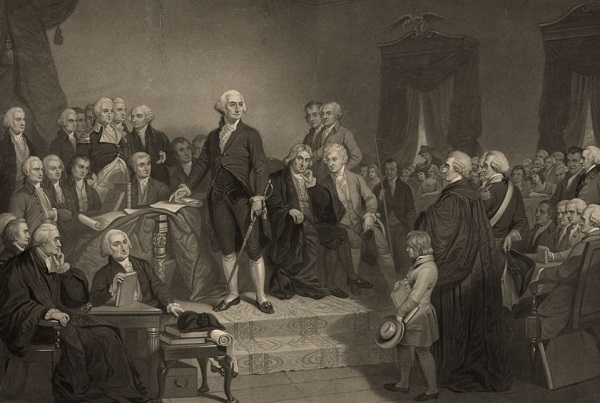
 Opinion1 day ago
Opinion1 day agoThe American Experiment Has Gone Down In Flames
-
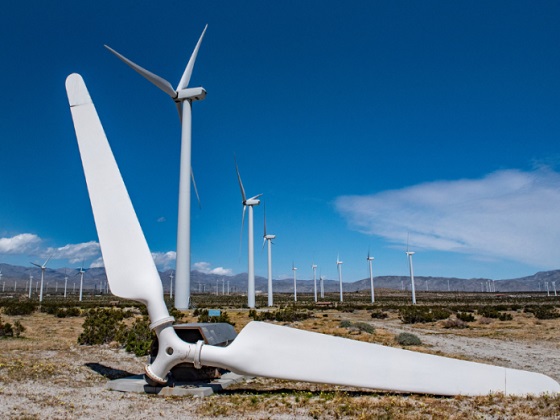
 Energy17 hours ago
Energy17 hours agoBuckle Up for Summer Blackouts: Wind Is Already Failing Texas in Spring




